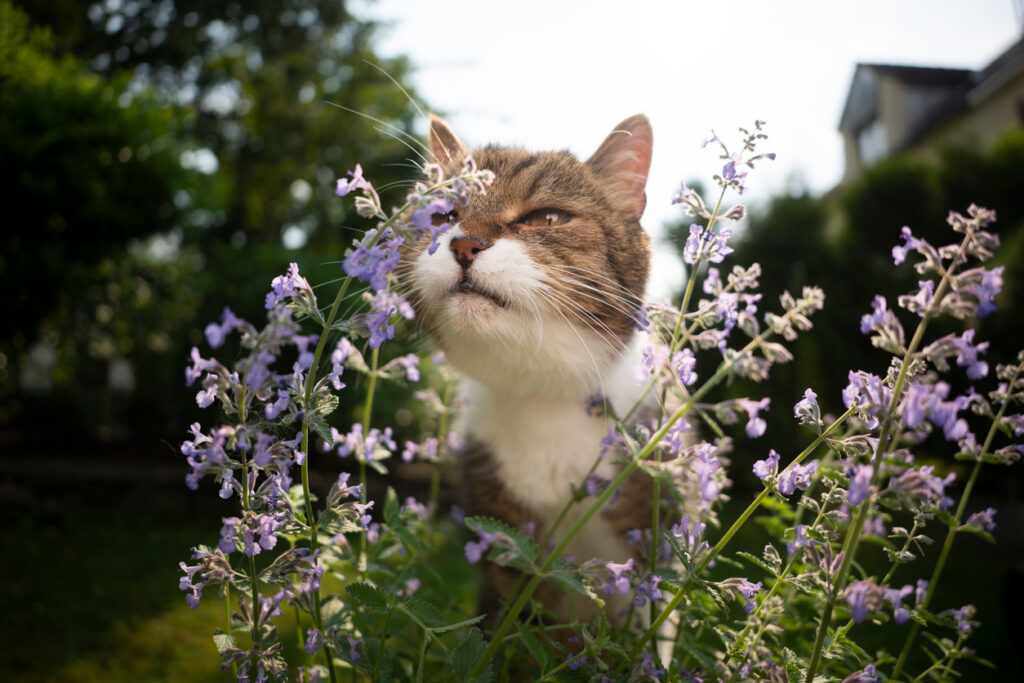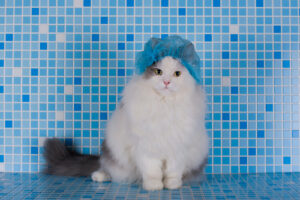What is Catnip? The Effects Catnip Has on Cats
Cats have been domesticated for thousands of years, and they remain one of the most popular pets in the world. Cats have a particular affection towards catnip, a plant with a distinctive scent that is known to cause a range of effects in feline pets. But what exactly is catnip, and what effect does it have on our feline companions?
What is Catnip?
Catnip or catmint (Nepeta cataria) belongs to the mint family and originated from Europe and Asia. It is an herbaceous herb that can grow up to three feet tall and has greyish-green leaves with small white or lavender flowers. Catnip contains a chemical compound called nepetalactone, which gives the plant its distinctive odor and is also responsible for its unique effects on cats. Nepetalactone is found in the leaves, stems, and flowers of the plant.
When a cat encounters catnip, it will usually sniff, lick, chew, and rub against the plant. This behavior is due to the nepetalactone compound, which interacts with the receptors in a cat’s nose and sends the signal to the cat’s brain. This response can vary from cat to cat, but most cats become excited, playful, and sometimes even aggressive.
Effects of Catnip on Cats
The effects of catnip on cats are temporary and typically last between five and fifteen minutes. It’s in their genetics that cats are sensitive to catnip. Some cats may be immune to catnip, and others may not show a reaction until they are six months or older. The most common behaviors exhibited by cats after encountering catnip include:
Hyperactivity
Many cats become very hyperactive and energized after being exposed to catnip. They might run around, play, and get involved in other high-energy behaviors.
Relaxation
After being exposed to catnip the cat feels relaxed and calm. They may roll around on the ground, purr, and seem very content.
Stressed free
Catnip can also have a soothing effect on cats that are stressed or anxious. Many cat owners use catnip to help their cats manage stressful situations such as vet visits or car rides.
Increased playfulness
Many cats become more playful and active when they are exposed to catnip. They may run around, jump, and play with toys more energetically and enthusiastically.
Vocalization
Some cats may become more vocal after being exposed to catnip. They may meow, purr, or make other noises more frequently than usual.
Rolling and rubbing
Many cats will roll around on the ground and rub their faces on objects after being introduced to catnip. This behavior is assumed to be a way for cats to spread the scent of the catnip around and to further stimulate themselves.
Increased affection
Some cats may become more affectionate towards their owners after being exposed to catnip. They may seek out attention and want pets more frequently than usual.
Grooming
Cats may groom themselves more often when they are exposed to catnip by nibbling at their fur repetitively.
How often one should use catnip for cats?
While catnip is not harmful to cats, it is important to use it in moderation. Some cats can become so addicted to catnip that they will seek it out compulsively. For example, if a cat becomes too aggressive after encountering catnip, it may be best to separate them from other pets until they calm down. Additionally, cats may become overstimulated and injure themselves while playing, so it’s important to supervise them while they are under the influence of catnip.

Uses of Catnip for Cats
Catnip can be used in a variety of ways to provide stimulation and enrichment for cats. Some of the most common uses of catnip for cats include:
- Toys – Many cat toys are infused with catnip to encourage playfulness and excitement. Toys such as stuffed mice, balls, and scratching posts are often available with catnip.
- Sprays – Catnip sprays can be used to add the scent of catnip to toys, bedding, and other items in a cat’s environment. This can encourage cats to explore and play with new items.
- Treats – Some cat treats contain small amounts of catnip, which can be a fun and tasty way to provide stimulation for cats.
- Homemade toys – Cat owners can make their toys using catnip, such as stuffed socks or fabric scraps. This can be a cost-effective way to provide stimulation for cats.
In addition to providing stimulation and enrichment, catnip may also have some health benefits for cats. For example, some studies have suggested that catnip may have a calming effect on cats, which can be beneficial for anxious or stressed cats.
Overdose of Catnip
Catnip is generally considered safe for cats; however, they can overdose on the herb if they consume too much of it. Ingesting too much catnip can cause an upset stomach, including vomiting and diarrhea. Occasionally, in rare cases, cats may develop more severe symptoms such as lethargy, loss of coordination, and even seizures.
It’s essential to remember, though, that a cat is unlikely to ingest that much catnip on their own and that it takes a significant amount to cause an overdose. Most cats self-regulate how much catnip they consume and stop when they’ve had enough.
Therefore, it is important to use catnip in moderation and under supervision, especially if your cat is new to the herb or has never been exposed to it before. Start with small amounts of catnip and observe your cat’s reaction, and always be sure to provide plenty of fresh water and monitor your cat’s behavior for any signs of distress or discomfort.
When to take your cat to a vet because of catnip?
To determine your cat’s overall health and check for any indications of distress or unusual behavior, the vet will probably conduct a simple physical examination. They might also inquire as to the duration and frequency of their exposure.
Allergic reaction
If your cat is experiencing an allergic reaction to catnip, the vet may administer antihistamines or other medications to help alleviate the symptoms.
Digestive upset
If your cat is experiencing digestive upset after being exposed to catnip, the vet may recommend supportive care such as fluid therapy or medication to help alleviate the symptoms.
Abnormal behavior
If your cat is exhibiting abnormal behavior after being exposed to catnip, such as prolonged lethargy or loss of consciousness, the vet may recommend more intensive treatment such as intravenous fluids or medication to help stabilize your cat’s condition. In addition to treating any immediate symptoms, the vet may also guide the safe usage of catnip in the future.
Conclusion
In conclusion, catnip is an herbaceous plant that has a range of effects on cats, from increased activity and euphoria to relaxation and sleepiness. While it is generally safe for cats, it is important to monitor your pet’s behavior when introducing them to catnip and to remove the plant if they show any signs of aggression or adverse reactions.
Looking for a cat vet Boulder, CO region? The expert vets at Boulder Veterinary Hospital are here to help! Give us a call today at (303) 442-6262, or Request an Appointment online.




